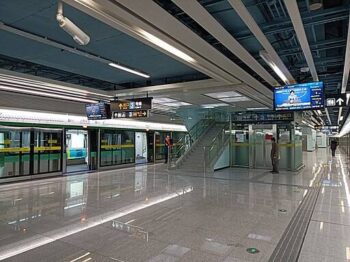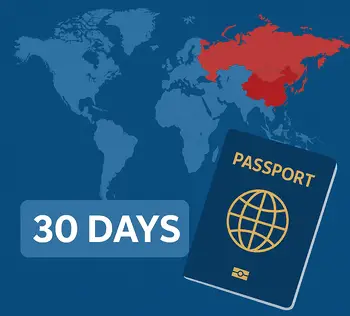
Navigating the subway systems in major Chinese cities can be straightforward with a bit of preparation.
This guide will help you understand how to use the subway in cities like Beijing, Shanghai, Guangzhou, and Shenzhen, ensuring a smooth and efficient travel experience.
We’ve also included tips for other cities, accessibility information, and links to helpful resources.
1. Introduction to Chinese Subway Systems
China boasts some of the most extensive and advanced subway systems in the world.

With over 55 cities having operational metro networks, these systems are designed to connect key commercial areas, tourist attractions, and residential zones.
Subways in China are known for their:
- Punctuality: Trains run frequently, with minimal delays.
- Cleanliness: Stations and trains are well-maintained.
- Affordability: Fares are inexpensive compared to other forms of transportation.
Why Use the Subway?
- Eco-Friendly: Subways are a sustainable alternative to taxis or private cars, reducing your carbon footprint.
- Convenience: Subways bypass traffic congestion, making them the fastest way to travel in busy cities.
For a full list of cities with metro systems, visit the China Metro Map website.
2. Buying Tickets
Purchasing subway tickets in China is simple, with multiple options available:
a) Ticket Vending Machines
- Found in every station.
- Offer instructions in Chinese and English.
- Accept payment via:
- Cash
- WeChat Pay
- Alipay
- Digital Yuan
b) Metro Cards
- Ideal for frequent travelers.
- Offer discounts on fares (e.g., 5-20% depending on the city).
- Available at customer service centers in subway stations.
- Examples:
- Beijing Yikatong Card: Official website
- Shanghai Public Transportation Card: Official website
c) Mobile Apps
- Apps like WeChat and Alipay allow you to purchase tickets and scan QR codes to enter stations.
- Some cities have dedicated apps, such as:
- Metro Beijing: Download here
- Shanghai Metro App: Download here
3. Navigating the Stations
Chinese subway stations are well-signposted and easy to navigate, even for first-time visitors.
Here’s what you need to know:
a) Station Entrances
- Look for the “地铁” (dì tiě) signs, which indicate subway entrances.
b) Maps and Signage
- Stations have detailed maps showing the layout, exits, and nearby attractions.
- Bilingual signs in Chinese and English make it easy to find your way.
c) Announcements
- Train announcements are made in both Chinese and English, providing information about the next stop and transfer options.
d) Accessibility
- Most stations are equipped with:
- Elevators and escalators for people with mobility challenges.
- Tactile paving for the visually impaired.
- Priority services for the elderly, pregnant women, and people with disabilities.
For more details on accessibility, check the China Accessibility Guide.
4. Using the Subway
Once you have your ticket, follow these steps to use the subway:
a) Entering the Station
- Use your ticket or scan your QR code at the turnstiles.
b) Finding Your Train
- Check the electronic boards for train schedules and platform information.
- Follow the signs to your platform.
c) Boarding the Train
- Wait for passengers to disembark before boarding.
- During peak hours (7:30–9:30 AM and 5:30–7:30 PM), trains can be crowded, so be prepared for a tight squeeze.
d) Transfers
- If you need to change lines, follow the transfer signs. Major stations have clear directions for transferring between lines.
5. Safety and Etiquette
While using the subway, it’s important to follow local customs and safety guidelines:
a) Queueing
- Always queue in an orderly manner and let passengers exit the train before you board.
b) Priority Seating
- Respect priority seating areas reserved for the elderly, pregnant women, and people with disabilities.
c) Personal Belongings
- Keep an eye on your belongings, especially during rush hours. Pickpocketing can occur in crowded areas.
d) Emergency Procedures
- Familiarize yourself with emergency exits and procedures. In case of an emergency, follow the instructions provided by station staff.
6. Popular Subway Lines and Attractions
Here are some notable subway lines and the attractions they connect to:
a) Beijing
- Line 1: Connects major tourist spots like Tiananmen Square and the Forbidden City.
- Line 4: Stops at the Summer Palace and Beijing Zoo.
b) Shanghai
- Line 2: Runs through the city center, connecting Pudong International Airport with People’s Square and Nanjing Road.
- Line 11: Stops at the Shanghai Disney Resort.
c) Guangzhou
- Line 3: Connects the city center with Guangzhou Baiyun International Airport.
- Line 1: Stops at Canton Tower and Beijing Road Pedestrian Street.
d) Shenzhen
- Line 1: Runs through the city, connecting the Luohu border with Hong Kong to the Window of the World theme park.
- Line 11: Connects the city center to Shenzhen Bao’an International Airport.
For detailed maps, visit China Metro Maps.
7. Troubleshooting Tips
Here’s what to do if you encounter common issues:
- Lost Metro Card: Visit the customer service center at any station to report and replace your card.
- Malfunctioning Ticket Machine: Look for a station attendant or use the mobile app to purchase a ticket.
- Missed Stop: Simply get off at the next station and take the train back in the opposite direction.
8. Additional Tips for Travelers
- Learn Basic Phrases: Knowing a few Chinese phrases can be helpful:
- “Where is the subway station?”: 地铁站在哪里?(Dì tiě zhàn zài nǎ lǐ?)
- “I need help.”: 我需要帮助。(Wǒ xū yào bāng zhù.)
- Download Offline Maps: Apps like Google Maps or Maps.me can help you navigate without internet access.
Conclusion
Using the subway in major Chinese cities is an efficient, cost-effective, and eco-friendly way to travel.
With clear signage, bilingual instructions, and multiple payment options, even first-time visitors can navigate the systems with ease.
By following this guide, you’ll be well-prepared to make the most of your subway journeys in China.
For more information, visit the official websites of the subway systems in Beijing, Shanghai, Guangzhou, and Shenzhen.
Safe travels!


